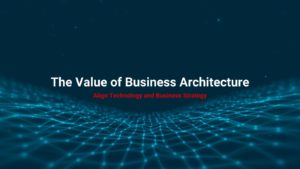These unprecedented times of challenges, obstacles, and crises have produced remarkable opportunities for focus, consistency, and cooperation. Discovering innovative ways to navigate the extraordinary shifts created by a worldwide pandemic, has underscored the need for all of us, as business and IT leaders, to get on the same page. Now, more than ever, we must increase our focus on alignment. Alignment is critical in the face of change and uncertainty. Defining the WHY and the WHAT leaders will align to begins with understanding what the business needs to accomplish first to survive and then thrive. That clear definition will allow IT leaders to align with what needs to be accomplished to enable and automate business outcomes. Leaders must also consider the needed adjustments in the way Business and IT work together to achieve collective outcomes. Alignment requires focus. Focus requires consistency. Consistency requires cooperation.
Alignment Requires Focus
Focus can be a challenge in heads down, hardworking companies. Functional leaders in successful companies are all doing their part to meet objectives. However, even with the best of intentions, it is not uncommon for blind spots to exist. Most often, these blinds spots exist between functional business units, and between business and IT. There is rarely a shared understanding of the current state of the business regarding their capabilities, and the future vision is often only aligned on financial outcomes. A successful transformation requires alignment between strategy and execution and a focus on common business outcomes. Business alignment requires business leaders to discuss, document, and disseminate a unified business vision, identified value, desired outcomes, and required capabilities needed to fulfill the business vision. This criticality of business clarity and alignment is an important topic which we will continue to delve into in future posts. Just as important as a unifying vision, is a common understanding and alignment on what existing efforts need to stop, be redirected or just say no to.
Focus Requires Consistency
There are so many great ideas and so little time to get them all done. There always seems to be infinite demand that is up against finite IT supply. Therefore, not all great ideas can be deemed equal. After the critical first step of defining the focused business agenda, is ensuring that the technology demand is in alignment and supports the focused business agenda and its needed outcomes. Business leaders own the decision to shut down old, expensive systems just as much as they own the decision to build something new. This requires an integrated business portfolio plan.
To enable critical business decisions, and needed business capabilities, business executives (especially CFO’s) need a fact base that provides a common understanding of the cost, risk, speed, and complexity of their existing assets (applications and technology legacy base). These business insights are described in more detail in this recent blog post entitled Facts Matter: The Cube. Alignment and decisioning on existing technology assets can be better understood by leveraging information derived from business architecture that has aligned information about applications and data (more about this in an upcoming post). It is not uncommon for business executives to be unaware of the specifics of what applications, data, and technology are being leveraged to run their part of the business. Even more uncommon is how much their portfolio of assets costs in both labor and lost opportunity to work on new solutions.
Alignment must rely on the approach to planning and leading technology investment and transformation. The full alignment of IT to a shared business vision begins with architectural planning. Knowing what needs to be architected and built, as well as planning for business consumption and decommissioning of legacy systems, is important. Not only does it create focus, and a shared understanding of who is building what and how it fits in the bigger picture, but addressing the base book of assets in decommissioning legacy (and often redundant) systems can free up talent and dollars to work on the collective agenda of the company. The architectural binding of business outcomes highlights the required technology outcomes. When it is decided what is required to architect and build, it must also be determined what will be consumed and decommissioned. All of this requires planning, architecture, and sequencing of needed dependencies to enable technical outcomes. Leaders across Business and IT must stay in alignment with the integrated portfolio plan, focus, and hold the line of critical messaging until they begin to see the desired changes in execution.
Consistency Requires Cooperation
Knowing your part, and flying in formation, are two critical pieces of organizational alignment that all productive companies must embrace in the face of change. Technology alignment and leveraging an architectural plan allows each IT Portfolio / Organization to understand their part in the required solutions that will enable the business vision and value. Cooperation, by its definition, means the process of working together to the same end. In order to shift quickly, many companies are embracing business agility and agile execution as a new way of operating together. While these concepts, for the most part, are not new, the required focus, consistency, and cooperation to execute together have shifted from ‘practice’ or ‘pre-season’ to ‘game on’.
As a proponent for SAFe, Portfolio and Program Increment planning allows teams to align to a common mission, understand the value of what they are building, and commit to clear objectives. The Feld Group Institute Strategic planning framework improves a SAFe implementation at a given company in many ways. That improvement starts with aligning, setting, and selling the appropriate strategic and transformation agenda with top executives and continues all the way through planning, architecture, organization, funding, governance, and the overall operating model for business and IT. We support and reinforce, with our framework, teaching, and work with leaders and enterprises, all of the SAFe Core Values. A critical core value of SAFe that we focus on and enable is Alignment:
“Alignment is needed to keep pace with fast change, disruptive competitive forces, and geographically distributed teams. While empowered, Agile Teams are good (even great), but the responsibility for strategy and alignment cannot rest with the combined opinions of the teams, no matter how good they are. Instead, alignment must rely on the Enterprise business objectives.” © Scaled Agile, Inc.
This idea of Enterprise alignment is represented by the Enterprise icon in the upper left corner of the SAFe big picture. The icon is small, but the importance to overall success and impact is significant. Enterprises must address the immediate (short term) to survive. Surviving requires you to take a deeper look at what is really important, so you know what existing activities need to stop or be redirected.
There is incredible value and impact with a truly aligned leadership team and an integrated business agenda. This, combined with focus and cooperation, can set your enterprise up for not only realizing short term objectives but also achieving the long term business strategies. If not you, then who? If not now, then when? As a leader, it is up to you to remove the noise and ensure the consistent focus of your organization. Make certain that they understand their role in cooperating and the value of achieving the integrated business agenda. The time is now!
Author: Jennifer Segui, Affiliate, The Feld Group Institute, and President of JEJ Segui Consulting, LLC.
Photo by Josh Calabrese on Unsplash




